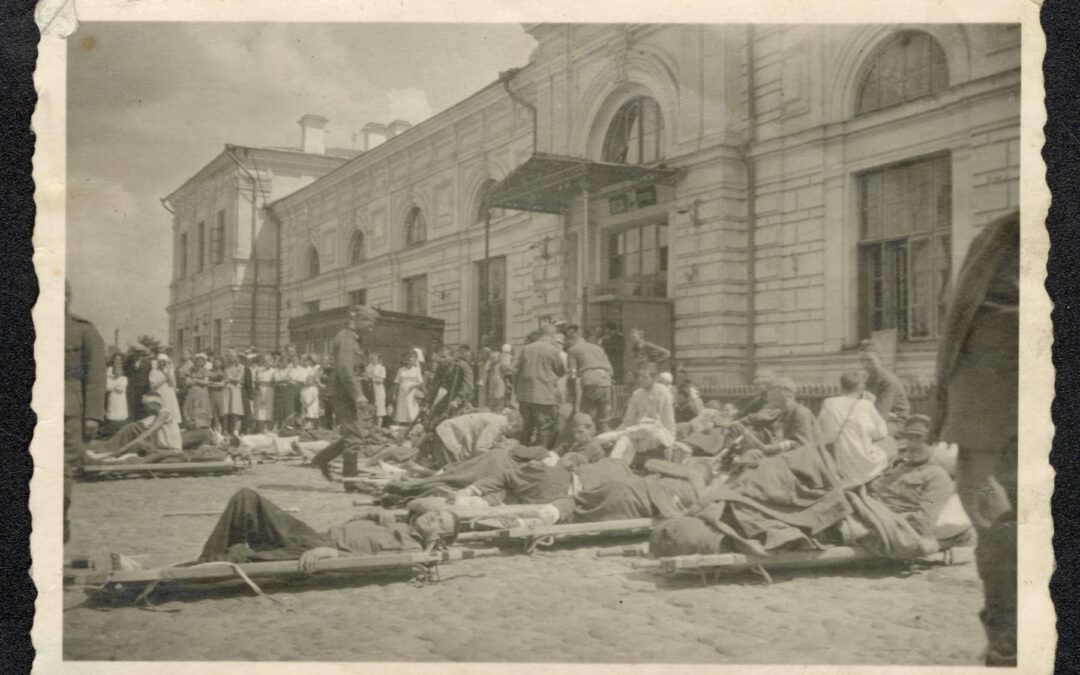The day of 25 June 1941 in Białystok had both a tragic end and beginning. Although all the last days of June were dramatic, it was just a foretaste of a disastrous July.
It was maybe 5 or 6 in the morning when Soviet soldiers slammed into the presbytery of the Church of Christ the King in the district of Dojlidy in Białystok. They dragged the 54-year-old parish priest Adolf Ołdziejewski out and brutally murdered him on the bank of the Biała river. Then they murdered his 85-year-old priest’s father in the presbytery. And then they torched the church. When the parishioners noticed the fire, they rushed to extinguish it. Then the Soviets started to shoot, killing Józef Kozłowski (49 y.o.), Franciszek Kuźmicz (42 y.o.), pregnant Janina Trochimczuk (26 y.o.), her husband Jan (28 y.o.) Helena Dawidowicz (21 y.o.) and Zofia Dawidowicz (only 16 y.o.).
The horror of this day was not over.
A few hours after the crime, the Soviets entered the presbytery of the Białystok Cathedral. They shouted that someone the day before had been shooting the military patrol form the church’s tower. They conducted a search and then took four priests, including dean Aleksander Chodyka and also organist Piotr Matulewicz. They improvised a “field court martial” on the spot and sentenced everyone to execution by firing squat. They put the prisoners against the walls of the nearby Branicki Palace. Finally, they shot only one men, the organist.
June 25 is almost the longest day of the year, so it must have been past 10 p.m. when Maria and Józef Blicharscy left their home. He was an acknowledged artist, a painter, a student of Józef Pankiewicz; she was a Polish teacher. They both worked in the Teacher’s Seminary in Białystok. They were only several hundred metres away form the place of the morning’s murder. The woman lit a cigarette. Maybe they were discussing the new German-Soviet war, or the fourth wave of deportations, which had happened only 5 days earlier, purging the homes of thousands of people, or maybe the prison next to their home, abandoned by the NKVD three days earlier and broken into by the citizens, who freed their loved ones? We will never know. More important is that the Soviet soldiers appeared there suddenly, accusing the couple of giving fire signs to the German planes (there is an airport nearby). Despite, or maybe because of the fact that Józef calmly tried to explain to them that they went out just to smoke a cigarette, the soldiers took him and shot him in the head nearby.
And this was the end of this horrific day. But the tension did not ease. On the contrary, two days later the Germans entered the city. On the same day they burned the Great Synagogue on Suraska Street with 800 Jews inside…




